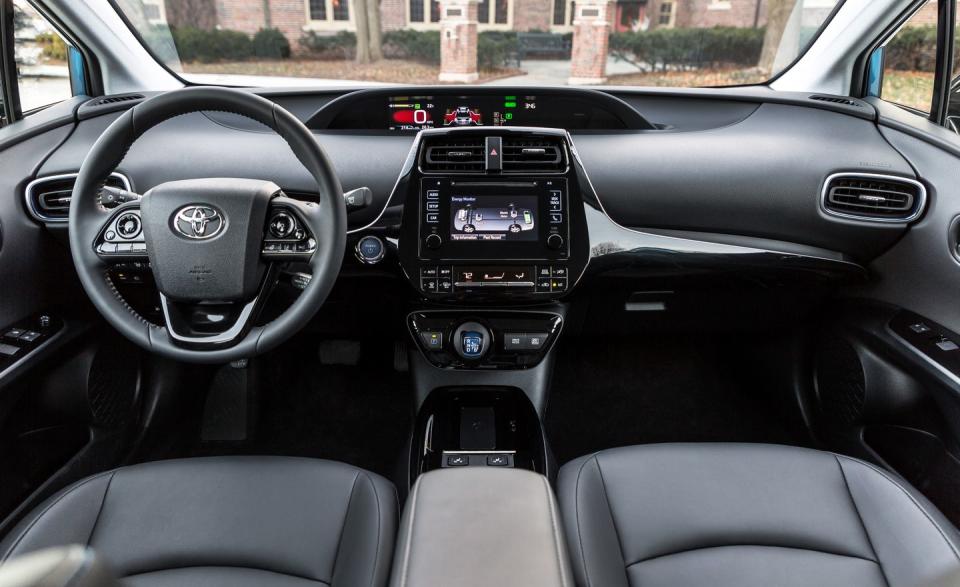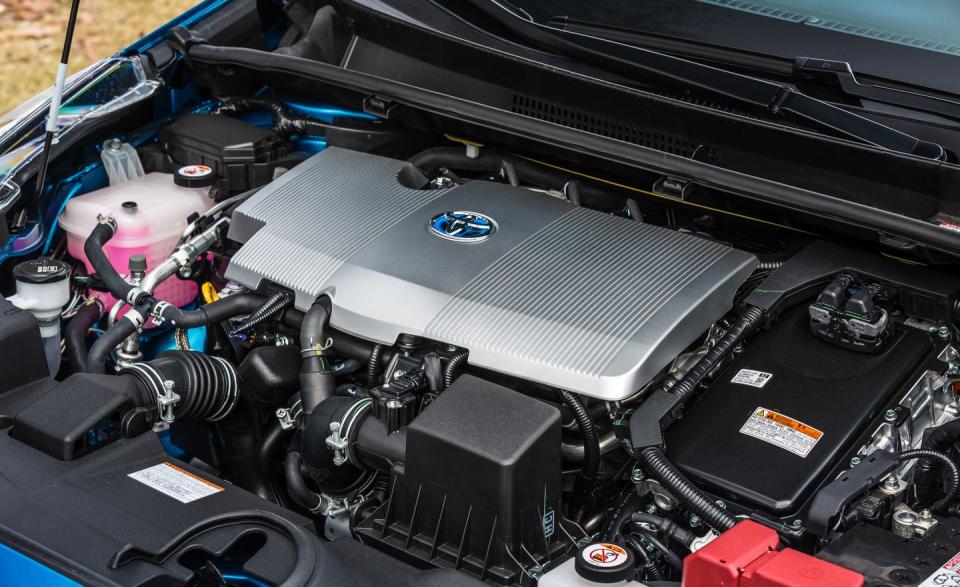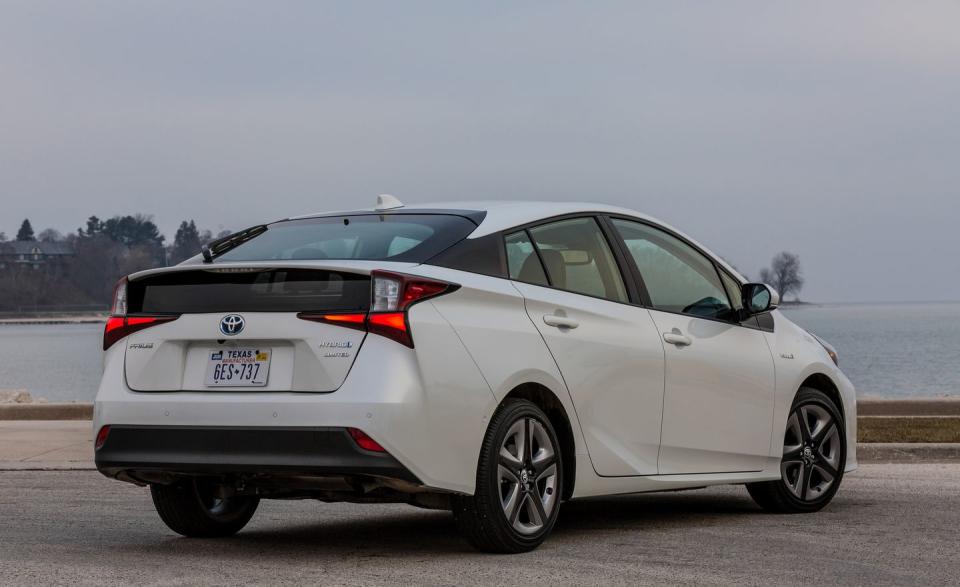The 2019 Toyota Prius AWD-e Brings Better Traction to the Brand's Signature Hybrid

The popularity of the Toyota Prius is shrinking faster than the polar icecaps. In 2016, sales dipped below 100,000 units for the first time since 2004. Last year they fell 33 percent. With 2018 drawing to a close, Prius sales are down another 23 percent. Even with the arrival in January of the new 2019 AWD-e model-which Toyota says should be good for a quarter of next year's sales-the company's flagship hybrid is expected to sell just 50,000 units in 2019.
Low gasoline prices are partially to blame, but Toyota is also culpable. Redesigned fascias for the 2019 model are its admission that when the fourth-generation Prius debuted for 2016, it was an ugly baby. With less-angry headlights and a smoother, more conservative look, the new face and derriere can only be seen as an improvement, one applied to front-drive and all-wheel-drive cars alike. Some resurfacing inside replaces the blinding-white plastic trim that seemed dated from new with piano black, polishing the idea that after 20 years the Prius is still an aspirational product.
But it's the shift in consumer tastes toward compact crossovers that has most impacted the Prius. Toyota's own RAV4 Hybrid is neck-and-neck in sales this year, even with a base price that's almost $4000 higher and fuel economy numbers that start with 3s rather than 5s. If you're looking for an answer to the "Why all-wheel drive? Why now?" questions, this is it. It doesn't hurt that Toyota is already selling a nearly identical all-wheel-drive Prius in Japan, simplifying this marketing move.
The AWD-e system adds a stand-alone electric motor, packaged within the rear multi-link suspension such that it does not intrude on the car's cabin or luggage compartment. The only connection between this compact, 7-hp motor and the standard 121-hp front-drive powertrain is electronic; there is no physical driveshaft. Toyota claims the system adds roughly 150 pounds, bringing curb weight to about 3300 pounds and dropping fuel economy a bit, to 50 mpg combined versus the front-drive variant's 52 to 56 mpg (depending on trim level). The only other significant change to the Prius that comes with adding all-wheel drive is in battery chemistry: All-wheel-drive cars use nickel-metal-hydride battery packs rather than lithium-ion, as NiMH performs better in cold weather.
Do not imagine that the AWD-e system will be good for taking a Prius rock crawling or desert racing. All-wheel-drive cars come with only a 0.2-inch increase in ground clearance over the standard Prius, to just 5.3 inches, and the all-wheel-drive system is active only under 43 mph. Its purpose is merely to improve traction and allow the Prius to pull away from a stop during slippery conditions. Slowly, of course. After the car reaches 6 mph, drive to the rear wheels switches from full-time to part-time mode and the Prius experience becomes mostly indistinguishable from the front-drive car.
During a brief test drive on dry pavement, we were able to shake loose some rear-drive assistance during aggressive cornering, although this served more to confirm the existence of the rear motor than to improve handling. AWD-e does not bring with it any sort of performance-enhancing torque vectoring; the Prius is still happy to understeer. A few circles in a roundabout ("Big Ben! Parliament!") showed a narrow window of all-wheel-drive operation until stability control aggressively steps in. Given the sedate pace that most Prius drivers maintain, the rear wheels will rarely be powered, which is the way Toyota wants it, a necessity to maintain the Prius's fuel-sipping EPA numbers. On a short snow-covered course, however, the rear motor helped to get the car moving from a stop as promised and kept it moving through an inch or two of the white stuff.
What all-wheel drive won't do is help in the stopping department. Prius AWD-e models come shod with the same 15-inch, low-rolling-resistance Dunlop Enasave 01 all-season tires as front-drive Prius models. A good set of winter tires, even fitted to a front-drive Prius, would bring greater traction benefits to stopping as well as going. Mounted and balanced on a spare set of wheels, complete with TPMS sensors and wheel covers and shipped to your house from Tire Rack, these would run about $900. By comparison, the upcharge for all-wheel drive in a $25,900 Prius LE is $1400, and in the $28,740 XLE, it's $1000. Those are the two middle trims in Toyota's new Prius trim naming strategy; all-wheel drive is not available on the top-of-the-line Limited or the entry L Eco.
As an addition to the Prius lineup the AWD-e certainly ticks another box. Its improvement in winter capability should be well received in the Snow Belt, even if this new Prius won't convince anyone to give up their Subaru. More important, the refreshed styling means anyone looking at a Prius will no longer have to shield their eyes.
('You Might Also Like',)




